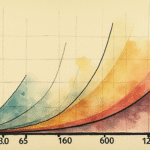Background on the Kamchatka Earthquake
On July 15, 2023, a powerful magnitude 8.8 earthquake struck the remote region of Kamchatka in Russia, making it the most significant seismic event globally since the 2011 Tohoku earthquake in Japan, which measured 9.0.
Who is Affected?
While the epicenter lies in a remote part of Russia, experts are concerned about potential global consequences. The Kamchatka Peninsula is located in the “Ring of Fire,” an area prone to frequent earthquakes and volcanic eruptions. This region’s seismic activity can have far-reaching effects, including triggering tsunamis in distant locations.
Experts’ Concerns Regarding Aftershocks
Seismologists and tsunami experts worldwide are closely monitoring the aftershocks following the Kamchatka earthquake. They warn that these subsequent tremors could potentially generate tsunami waves capable of affecting coastal regions around the Pacific Ocean.
Why are Aftershocks Dangerous?
Aftershocks are smaller earthquakes that occur following a significant seismic event. They can destabilize already weakened areas and, in some cases, displace large volumes of water. When these aftershocks occur near coastlines or under the ocean, they can generate tsunami waves that travel across vast distances.
Potential Impact on Coastal Communities
Coastal communities in the Pacific Rim, including those in Japan, the United States (especially Alaska and the West Coast), and countries like Chile, Peru, and Ecuador, are at risk. These regions have experienced devastating tsunamis in the past due to seismic activity, and residents are on high alert following the Kamchatka earthquake.
What can communities do to prepare?
- Early Warning Systems: Many coastal communities have early warning systems in place that detect tsunamis and alert residents to evacuate.
- Emergency Plans: Local governments and organizations should have well-established emergency plans, including evacuation routes and designated safe zones.
- Public Awareness: Educating the public about tsunami risks, warning signs, and appropriate responses is crucial for ensuring community safety.
Key Questions and Answers
- Q: What is the significance of the Kamchatka earthquake?
A: The Kamchatka earthquake is significant because it is the largest seismic event since the 2011 Tohoku earthquake in Japan. Its magnitude of 8.8 makes it a major global seismic event, with potential aftershocks capable of triggering tsunamis.
- Q: Who is at risk from potential tsunamis?
A: Coastal communities in the Pacific Rim, including Japan, the United States (Alaska and West Coast), and countries like Chile, Peru, and Ecuador, are at risk due to their proximity to the Pacific Ocean and history of tsunami events.
- Q: How can communities prepare for potential tsunamis?
A: Communities should invest in early warning systems, establish emergency plans with clear evacuation routes and safe zones, and prioritize public awareness about tsunami risks and appropriate responses.






